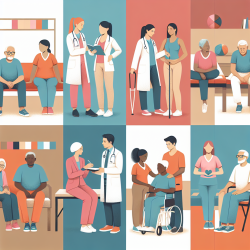Introduction
The study titled "Neighbourhood environment factors and the occurrence of injuries in Canadian adolescents: a validation study and exploration of structural confounding" offers a comprehensive look into the potential biases that can occur when studying social factors and their impact on health outcomes. As a Special Education Director, understanding these biases and the study's findings can enhance your ability to create safer and more supportive environments for students.
Understanding Structural Confounding
Structural confounding refers to the bias that occurs when social sorting mechanisms affect the study of etiological relationships. In simpler terms, certain social groups may never be exposed to specific risk factors due to their inherent social structures, making it difficult to draw meaningful causal inferences. This study aimed to validate the measurement of social capital, socioeconomic status (SES), and built environment factors, and to explore their roles as potential structural confounders in the occurrence of youth injuries.
Key Findings
The study utilized a nationally representative sample of over 26,000 Canadian adolescents aged 11-15 years. It developed composite scales for social capital, SES, and built environment, which were tested for reliability and validity. The results showed that:
- The proposed scales demonstrated good psychometric properties.
- No evidence of structural confounding was detected, indicating that the relationships between social capital and injury occurrence can be studied without bias.
- Canada provides a suitable context to study the effects of neighborhood social and environmental exposures on injuries in adolescents.
Implications for Practitioners
As a practitioner in the field of special education, these findings are crucial. They suggest that interventions aimed at improving social capital and SES within school communities could be effective in reducing injury rates among adolescents. Here are some actionable steps you can take:
- Enhance Social Capital: Foster environments that promote trust, cooperation, and cohesion among students and staff. This can be achieved through community-building activities and open communication channels.
- Address Socioeconomic Disparities: Work with local organizations to provide resources and support to families in need, ensuring that all students have equal opportunities for success.
- Improve Built Environments: Advocate for safer school surroundings by collaborating with local authorities to enhance street connectivity and increase green spaces.
Encouraging Further Research
While this study provides valuable insights, it also highlights the need for further research to test the consistency of these findings in other populations and with different outcomes. As a leader in your field, you can encourage and support research initiatives that explore these areas, contributing to the body of knowledge that informs best practices in education and community health.
To read the original research paper, please follow this link: Neighbourhood environment factors and the occurrence of injuries in Canadian adolescents: a validation study and exploration of structural confounding.










